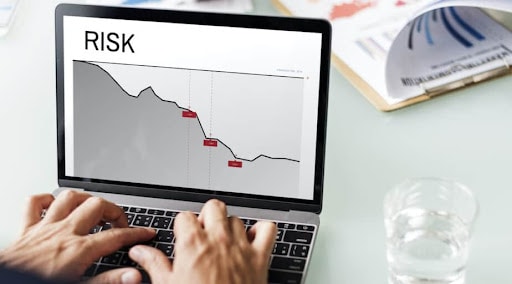A Favorite Tool for Business Risk Management
- Jeffrey Agadumo
- December 3, 2021

Business risk management encompasses various areas, such as compliance with regulation like GDPR, HIPAA, Anti-Money Laundering, PCI-DSS, and CCPA, to name a few.
There are also more subtle risks outside of compliance that can lead to damaging results which are just as severe.
An example is different versions and definitions of specific metrics across various departments, leading to wrong decisions, actions, and business strategies.
This article explores the science of risk management, outlines the processes involved, and presents a tech guide to help you assess modern-day risks, minimize potential harm, and maximize success.
The Easter egg is at the end of the article.
Navigating Uncertainty in a Digital World
It is probably no longer news that your business faces risks in today’s data-driven world .
Risk is an inevitable part of any business, but with the right strategies, it can be managed and even turned into an opportunity for higher returns and growth.
While there are dangers to taking risks, you should equally bear in mind that remaining risk-averse also bears ramifications.
Granted, there isn’t a “one size fits all” process to dealing with risk, as there are various ways it can manifest in a business; therefore, you have to be aware of the risk factors that your business may face in both short and long term.
What is Risk Management?
Risk management outlines processes that help organizations identify potential threats, properly analyze them, and employ strategies to avoid them or minimize their impact.
It involves evaluating the likelihood and consequences of different risks, determining the best way to respond, and regularly monitoring and reviewing the effectiveness of those responses.
Risk management aims to balance the possibility of loss versus the costs of protecting against that loss.
You can achieve this by systematically utilizing a combination of resources like labor, processes, and technology stacks to minimize losses from risks.
The Upsides of Taking on Risk in Business
As much as risk is associated with loss, there are still possible benefits that come from taking risks in business:
- Increased Profits : Taking calculated risks can lead to greater rewards and profits.
- Opportunity for Growth : Risks can open up new opportunities for growth and expansion.
- Competitive Advantage : Taking calculated risks can give businesses a competitive advantage over those who are more risk-averse.
- Attracting Investors : Demonstrating an ability to manage risks effectively can attract investors and increase funding opportunities.
- Building Reputation : Successfully managing risks can improve a business’s reputation and brand.
Risk Management Process
When it comes to risk management, five action words guide you through a step-by-step process on how to address risks:
1. Identify
This step involves identifying all potential risks that your business may face, and there are several ways to do so, some of which include:
- Root cause analysis : Examining the underlying causes of past problems to identify potential risks.
- Brainstorming : Gathering a group to identify potential risks and brainstorm ways to mitigate them.
- Data analysis : Analyzing data and patterns to identify potential risks.
- Intelligent systems: Using artificial intelligence to identify potential risks automatically.
- SWOT analysis : Evaluating an organization’s strengths, weaknesses, opportunities, and threats to identify potential risks.
- Testing and simulation : creating tests and simulations to identify potential risks and vulnerabilities before they cause harm.
- Expert judgment : Consulting with experts in various fields to identify potential risks.
Due to the various forms of risks, it can be difficult to identify every risk your business may face. Some risks that companies typically face include the following:
- Financial risk.
- Operational risk.
- Strategic risk.
- Compliance risk.
- Reputational risk.
- Cyber risk.
- Political risk.
- Physical risk.
2. Analyze/ Assess
Once you identify risks, more data is usually collected on each risk factor and thoroughly analyzed to gather more facts. These facts are then assessed to determine the next steps.
Some steps in this process include:
- Prepare and Aggregate your Data: data is collected, cleaned and taken through the process of data aggregation.
- Create a Risk Model: use mathematical models to simulate different scenarios and assess the impact of potential risks.
- Assess the facts: Assess the facts generated to determine the likelihood and impact of each identified risk factor.
3. Prioritize
Risk prioritization involves determining which risks a business should focus on based on their likelihood and impact. The process typically includes the following steps:
- Review risk assessments: Review the results of the risk assessments for all identified risks.
- Develop a risk matrix: Plot the risks on a matrix that considers both likelihood and impact and places each in the appropriate quadrant.
- Assign priority levels: Assign priority levels to risks based on their position in the risk matrix, with higher priority given to risks with high likelihood and high impact.
- Consider additional factors: Consider other factors, such as the resources required to mitigate the risk and the potential impact on stakeholders, staff, and customers.
- Develop a risk management plan: Based on the priority levels, develop a risk management plan that focuses on the highest priority risks and outlines strategies to manage or control them.
4. Control
This is the implementation phase of the process and involves carrying out whatever actions the risk management plan has outlined.
This typically includes an appropriate response to each risk factor identified.
The five types of risk response are:
- Avoidance : Avoiding the risk by not engaging in the activity that creates the.
- Sharing : Distributing the burden of the impact of risk amongst other partners or stakeholders.
- Transfer : Transferring the risk to another party, such as through insurance or contracts.
- Reduction: Reducing the potential losses from risks by reducing your stake in the project or endeavor.
- Acceptance : Accepting the risk and having a plan to manage it if it occurs.
5. Monitor/Report
In this process, the organization continues to review and document information about the risks outlined and the effectiveness of risk management strategies.
The process usually includes the following steps:
- Monitor risks : Regularly monitor the identified risks and the effectiveness of risk management strategies.
- Evaluate control strategies: Evaluate the effectiveness of risk management strategies, such as risk response plans, and identify any gaps or areas for improvement.
- Update risk assessments: Update the risk assessments and associated documentation to reflect any changes in the likelihood or impact of risks.
- Prepare risk reports: Prepare regular reports on risks and risk management activities for management and decision-makers.
- Communicate results: Communicate the results of risk monitoring and reporting to relevant stakeholders, including management, employees, and customer.

Managing Risks in a Digital World
The world has changed dramatically in recent years, with the rise of digital technology transforming the way we live and work. This rapid pace of change has brought new risks, making risk management more critical than ever.
Technology plays a critical role in risk management, helping organizations to identify, assess, and mitigate risks more effectively. Some of the key ways technology can support risk management include:
- Automated risk assessment : Machine learning algorithms to identify and assess risks in real-time.
- Predictive analytics: using data and algorithms to predict and prevent potential risks before they occur.
- Data visualization: graphical tools that visualize and communicate risk data, making it easier to recognize patterns and act on them.
- Security controls: software and hardware that implement technical controls, such as firewalls, encryption, and access control.
- Compliance management software : using software to manage and monitor compliance with regulations such as GDPR or HIPAA.
- Business continuity planning software : using software to develop, implement, and test disaster recovery plans.
- Blockchain : decentralized ledger technology for storing data that increases the transparency and security of data transactions.
- GRC (Governance, Risk, and Compliance) software: using integrated software solutions to manage and monitor governance, risk, and compliance processes and requirements.
- Cloud-based services: a cloud-based alternative for storing and managing data reduces the risk of lack of data cohesion across departments and data stores.
The Ideal Tool for Effortlessly Managing Business Risk
In today’s business environment, it is imperative to ensure your data transformation models contain metrics that are calculated uniformly across departments and data repositories.
This improves data literacy and ensures business teams operate under the same assumptions.
3 Ways to Reduce Your Business Risk with Datameer:
Datameer helps business risk management in three ways:
- Datameer delivers automated and user-supplied in-depth documentation about your data. This allows complete transparency, shared understanding, proper use, and accurate interpretation of data.
- Datameer also works with your data directly inside of your Snowflake CDW. The data is never moved and is transformed inside of Snowflake . This keeps your data secured in place for regulatory compliance.
- Data models can be shared and linked to other data models. Data engineering teams build core data models that are all regulatory compliant and define shared metrics. Analysts will link to and use those models in their analytics-specific models to maintain compliance and work from shared metric definitions.
Next steps
Want to see Datameer in action?
Explore these unique data modeling and transformation capabilities, and discover how Datameer can reduce your business risk.


